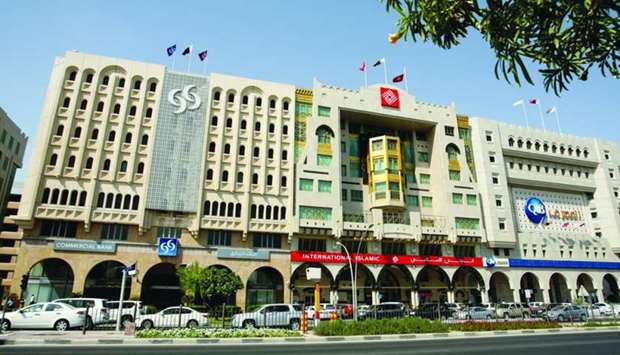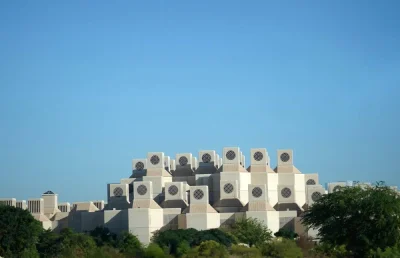Investor confidence in Qatar remains underpinned by financial assets of over $300bn held in a sovereign wealth fund and demonstrated in the country’s ability to raise money on the international bond markets at relatively low yields, the World bank has said in a report.
All three major credit rating agencies rate Qatari bonds as investment grade assets, the World Bank said in its latest country report.
According to the World Bank, Qatar’s banking system remains well capitalised and asset quality strong. Liquidity pressures that emerged following the Gulf rift in 2017 have fully waned (in part due to increased government deposits in the banking system), and foreign exchange reserves have recovered to pre-rift (blockade on Qatar) levels.
“Despite the peg to the dollar, the central bank has not lifted policy rates in line with the US Fed, reflecting efforts to support the economy,” the World Bank noted.
Absolute poverty is not an issue for Qatar’s citizens, the report said and noted lower incomes correlate with household dependency ratio, job market status, educational attainment, female headship and disability.
Unemployment is low, at 0.1% for the total labour force and 1.8% for women. Spatial differences in welfare exist, both for monetary and non-monetary measures, notably between more urbanised and less urbanised areas.
Qatar’s growth, the bank said, slowed (in 2017) to 1.6%, the “weakest” in over two decades, due to a diplomatic rift with some GCC countries that had culminated in the severing of trade and diplomatic ties in mid-2017.
However, with a rerouting of trade and opening of a new port, the economy has recovered, posting average quarterly growth of 2% (year-on-year) in the first three quarters of 2018.
The local economy has also been supported by continued infrastructure spending related to preparations for hosting the 2022 FIFA World Cup; consequently the impacts of the (still ongoing) rift have been relatively short-lived and the economy is estimated to have grown by 2.1% in 2018.
Qatar’s outlook remains positive with growth expected to rise to 3.4% by 2021 driven by higher service sector growth as the FIFA World Cup draws nearer. In addition, higher infrastructure spending on Qatar National Vision 2030 projects aimed at diversifying the economy should help offset falling investment spending on FIFA projects, the World bank said.
Finally, the hydro-carbon sector growth is also expected to pick up as the Barzan natural gas facility comes online in 2020, and as the expansion of the North Field gas projects is completed by 2024.
Monetary policy is expected to gradually tighten as Qatar’s central bank resumes raising interest rates to restore the spread versus US policy rates, and to attract foreign exchange (FX) inflows into the banking system.
“Public finances are expected to remain in small surplus, supported by recent tax reforms and the introduction of a VAT over the medium term. A recovery in imports, driven by capital goods related to infrastructure spending, should keep the current account surplus in single-digits in contrast to surpluses of over 30% prior to 2014,” World Bank said.
According to the World Bank, Qatar’s banking system remains well capitalised and asset quality strong. Liquidity pressures that emerged following the Gulf rift in 2017 have fully waned (in part due to increased government deposits in the banking system), and foreign exchange reserves have recovered to pre-rift (blockade on Qatar) levels.
“Despite the peg to the dollar, the central bank has not lifted policy rates in line with the US Fed, reflecting efforts to support the economy,” the World Bank noted.
Absolute poverty is not an issue for Qatar’s citizens, the report said and noted lower incomes correlate with household dependency ratio, job market status, educational attainment, female headship and disability.
Unemployment is low, at 0.1% for the total labour force and 1.8% for women. Spatial differences in welfare exist, both for monetary and non-monetary measures, notably between more urbanised and less urbanised areas.
Qatar’s growth, the bank said, slowed (in 2017) to 1.6%, the “weakest” in over two decades, due to a diplomatic rift with some GCC countries that had culminated in the severing of trade and diplomatic ties in mid-2017.
However, with a rerouting of trade and opening of a new port, the economy has recovered, posting average quarterly growth of 2% (year-on-year) in the first three quarters of 2018.
The local economy has also been supported by continued infrastructure spending related to preparations for hosting the 2022 FIFA World Cup; consequently the impacts of the (still ongoing) rift have been relatively short-lived and the economy is estimated to have grown by 2.1% in 2018.
Qatar’s outlook remains positive with growth expected to rise to 3.4% by 2021 driven by higher service sector growth as the FIFA World Cup draws nearer. In addition, higher infrastructure spending on Qatar National Vision 2030 projects aimed at diversifying the economy should help offset falling investment spending on FIFA projects, the World bank said.
Finally, the hydro-carbon sector growth is also expected to pick up as the Barzan natural gas facility comes online in 2020, and as the expansion of the North Field gas projects is completed by 2024.
Monetary policy is expected to gradually tighten as Qatar’s central bank resumes raising interest rates to restore the spread versus US policy rates, and to attract foreign exchange (FX) inflows into the banking system.
“Public finances are expected to remain in small surplus, supported by recent tax reforms and the introduction of a VAT over the medium term. A recovery in imports, driven by capital goods related to infrastructure spending, should keep the current account surplus in single-digits in contrast to surpluses of over 30% prior to 2014,” World Bank said.




